|
Me Sahyadri |
|
Blue Capped Rock Thrush |
|
June 2016 |
|
Volume 3, number 9 |
Please use minimum 1280 pixel horizontal screen
resolution for viewing. Please be patient while all the images in
webpage are loaded. Please do not use the images for any commercial
use without permission. Text in Marathi and English is not exact
translation. Please give sufficient time to allow the photographs to load. Special thanks to all those who helped me during the compilation and field work at Mahabaleshwar and Bhimashankar for the help and guidance. |
|
|
|
|
|
|
सह्याद्री (पश्चिम घाट) हा एक नैसर्गिक संपदेचा, वैविध्यतेचा, भौगोलिक व ऐतिहासिक ठेवा आहे. वाढत्या मानवी अतिक्रमणाचा, सह्याद्रीच्या विविध घटकांवर होणारा दुष्परिणाम भविष्यात आपल्यालाच धोका निर्माण करेल, यात शंका नाही. शुद्ध पाणी, हवा व उर्जा, भावी पिढीला मिळण्यासाठी, नंद्यांचे उगम असलेला सह्याद्री व त्याभागातील जंगले टिकवणे महत्वाचे आहे. सह्याद्रीच्या महत्वाच्या घटकांचे महत्व छायाचित्रांद्वारे प्रकट करण्याचा मी येथे प्रयत्न केला आहे. येथील पक्षी, प्राणी, वनस्पती, अधिवास, किल्ले व लेणी अशा विविध विषयांबद्दल आपण समजुन घेऊ.
|
|
Western ghats, or Sahyadri as we all call it as, is a treasure trove of spectacular landscapes, biodiversity, flora, fauna, some amazing geological wonders and manmade monuments. With the increasing pressure from human encroachment, all these elements are under stress and in turn are under depletion. Western ghats should be left untouched by human beings, to protect their future generations from getting short of resources, such as water, energy and clean air. The important elements of western ghats, which need protection are highlighted in the new version of Photo journal , Me Sahyadri Magazine. The various issues of journal have a brief of inspiring subjects such as birds, mammals, forts, ancient caves, snakes and the ambiance.
|
|
|
| |
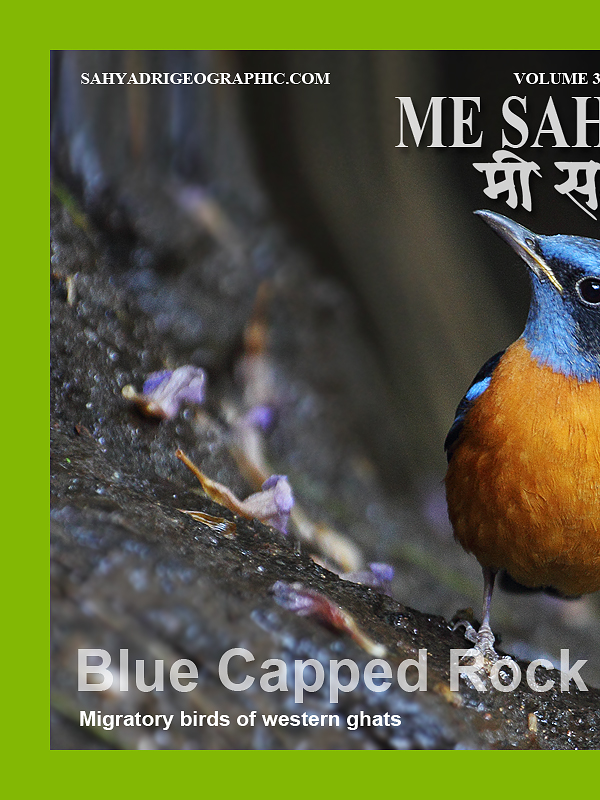 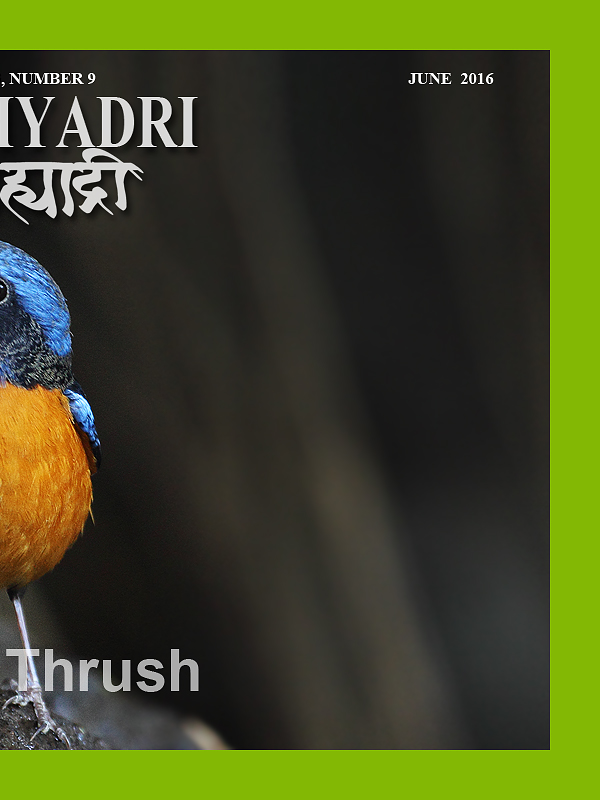
|
| |
| Me Sahyadri – May 2016 – Blue capped rock thrush
|
| |
|
|
ब्लु कॅप्ड रॉक थ्रश हा लहान हिमालयन पक्षी, हिवाळ्यात सह्याद्रीच्या व पुर्व भारतातील जंगलांमध्ये स्थलांतर करुन येतो. हा पक्षी रंगाने केशरी व निळा असतो. याचा आकार बुलबुल पक्ष्याएवढा असतो.
|
|
Scientific name of Blue-capped rock thrush is Monticola cinclorhynchus. It is also called as blue headed rock thrush. This is a small Himalayan thrush bird. It has cobalt blue and orange plumage. Its size is close to that of bulbul.
|
|
|
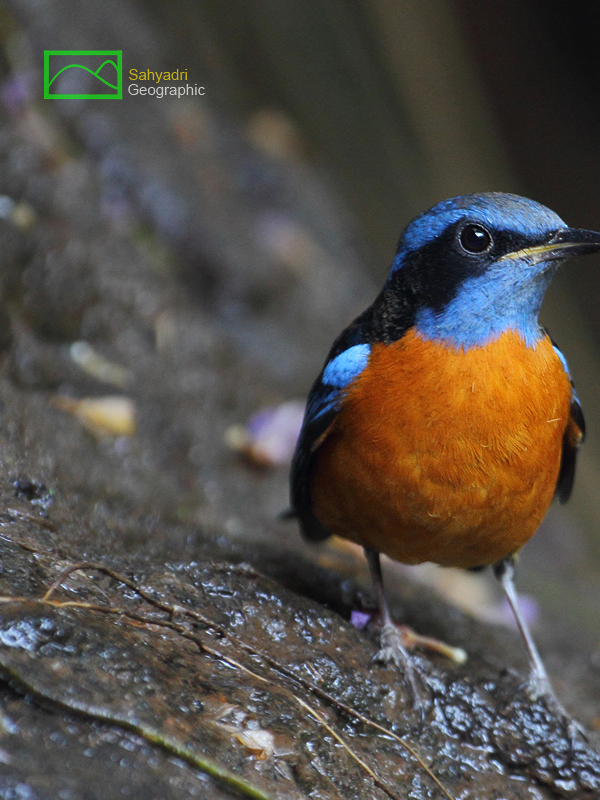 
|
| |
| 1. Blue capped rock thrush male, western ghats, Maharashtra, India
|
| |
|
|
| |
 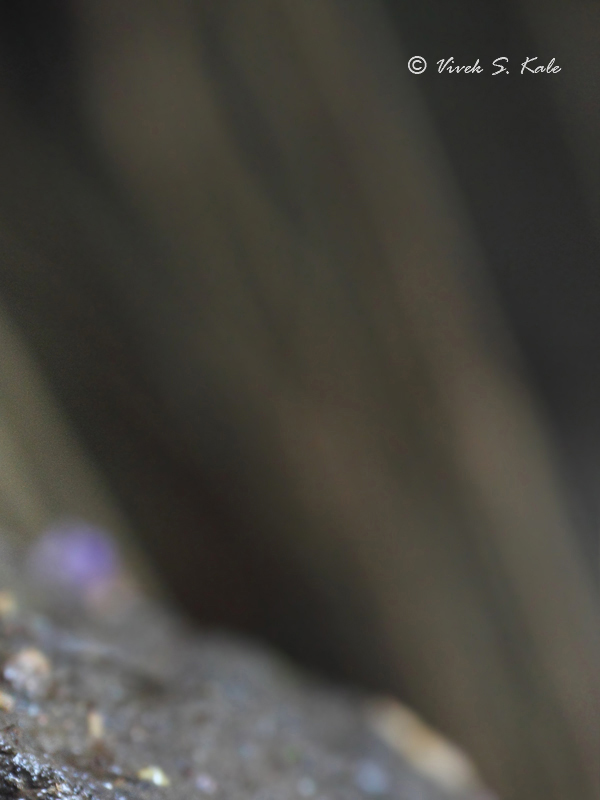
|
| |
| 2. Blue capped rock thrush male, western ghats, Maharashtra, India
|
| |
|
|
| |
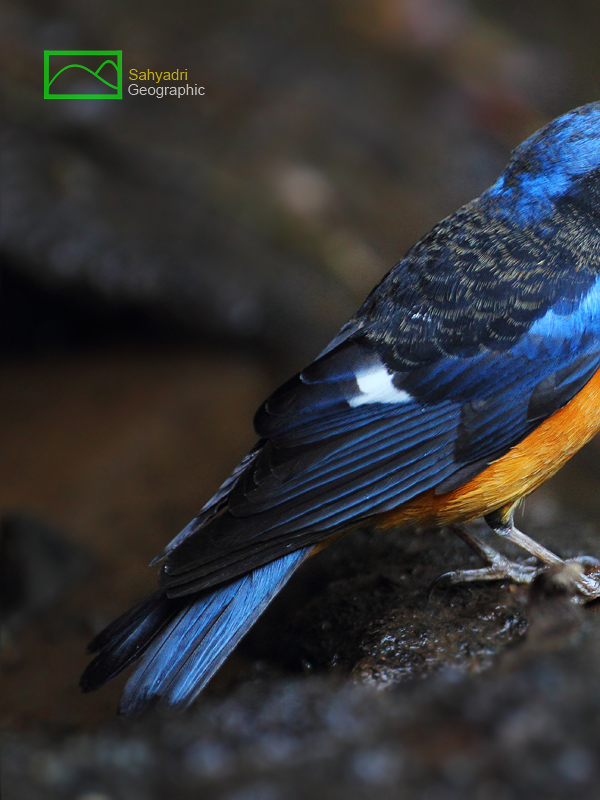 
|
| |
| 3. Blue capped rock thrush male, western ghats, Maharashtra, India
|
| |
|
|
या पक्ष्याला मराठीत प्रचलित नाव नसले तरी आपण त्याला निळ्या टोपीचा कस्तुर असे म्हणु शकतो.
हा पक्षी अंदाजे १७ से. मी. आकाराचा असतो. नर आणी मादी पक्षी रंगरुपाने वेगवेगळे दिसतात. अश्या प्रकारास इंग्रजीत सेक्शुअल डाउमोर्फिजम असे म्हणतात.
|
|
The bird is about 17 cm in size (length from its beak to tail). The sexual dimorphism can be seen in this bird species. Sexual dimorphism is the difference in appearance between males and females of the same species, such as in colour, shape, size, and structure.
|
|
|
| |
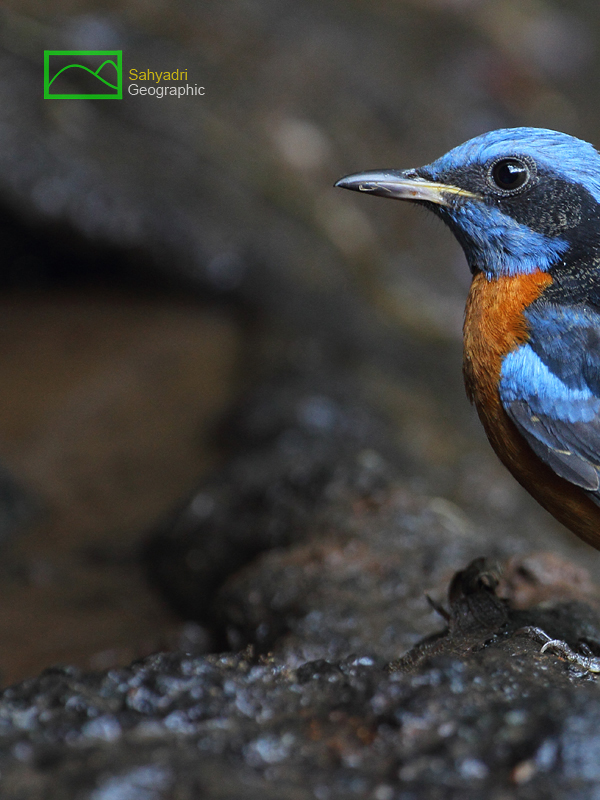 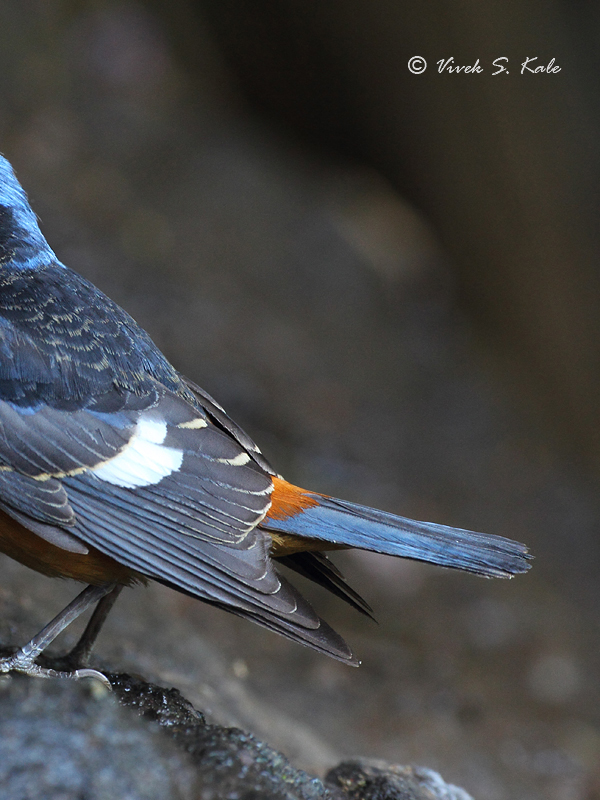
|
| |
| 4. Blue capped rock thrush male, western ghats, Maharashtra, India
|
| |
|
|
| |
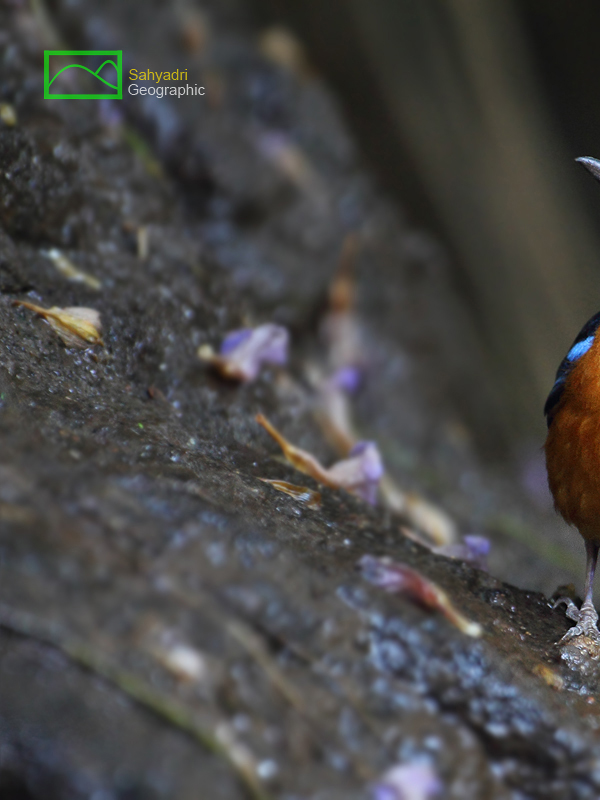 
|
| |
| 5. Blue capped rock thrush male, western ghats, Maharashtra, India
|
| |
|
|
| |
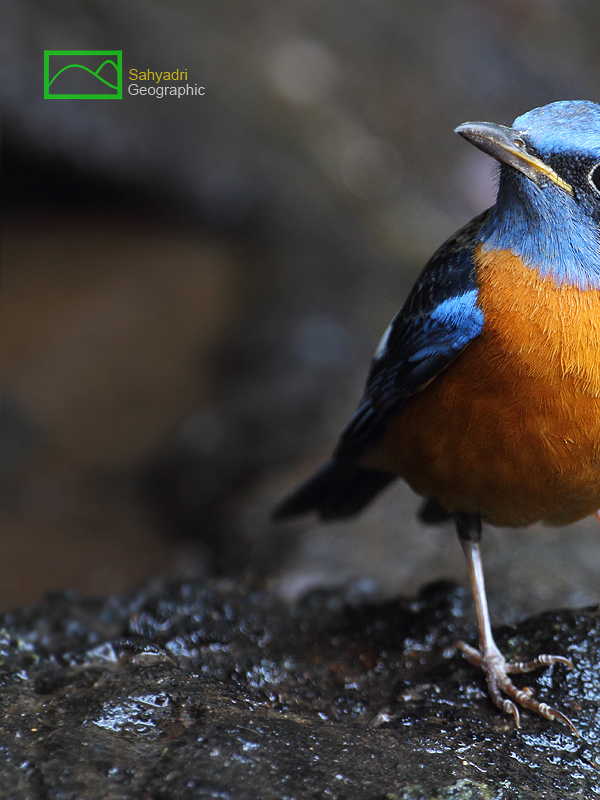 
|
| |
| 6. Blue capped rock thrush male, western ghats, Maharashtra, India
|
| |
|
|
नर पक्षी रंगाने निळा आणी केशरी असतो. त्याचा माथा, गळा व मान निळ्या रंगाची असते. त्याच्या पाठीकडचा भाग आणी पोटाकडचा भाग केशरी असतो. त्याच्या पिसांचा भाग निळा, केशरी, सफेद आणी काळा असतो. त्याचे डोळे तपकिरी असतात. पाय पांढरट करडे असतात. त्याची शेपुट निळी असते. त्याची चोच काळी असुन त्याचा काही भाग पिवळट असतो
|
|
The male bird has cobalt blue crown, chin, nape and throat. The upper parts are cobalt blue and black. rump, upper tail-coverts, whole lower surface, axillaries and under wing-coverts are orange.Lesser wing coverts are bright cobalt blue. The upper tail coverts are orange in color. Lores, cheeks, ear-coverts, sides of neck, back and scapulars are black in color. The greater wing-coverts are black edged with blue.
|
|
|
| |
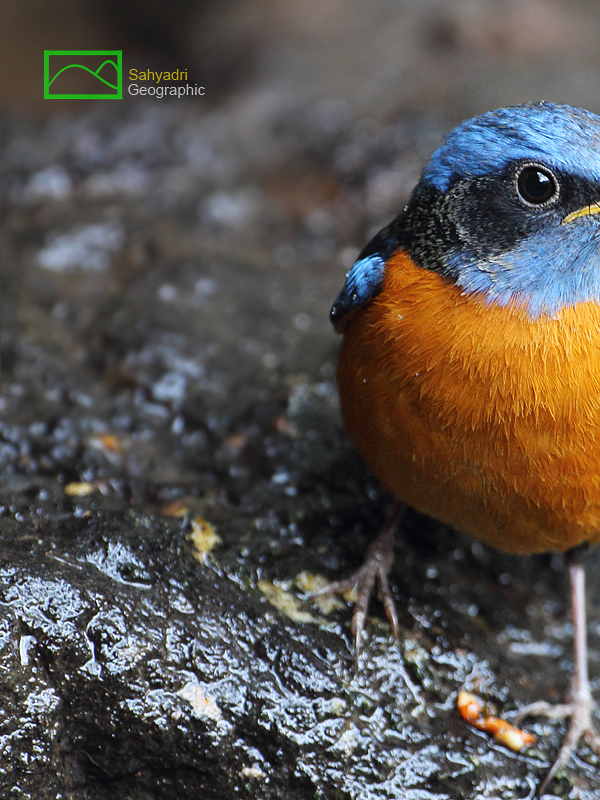 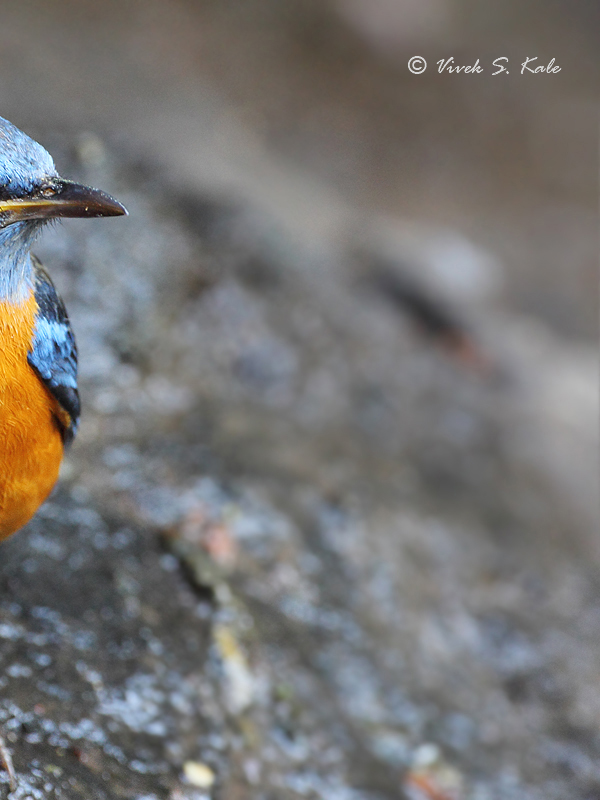
|
| |
| 7. Blue capped rock thrush male, western ghats, Maharashtra, India
|
| |
|
|
| |
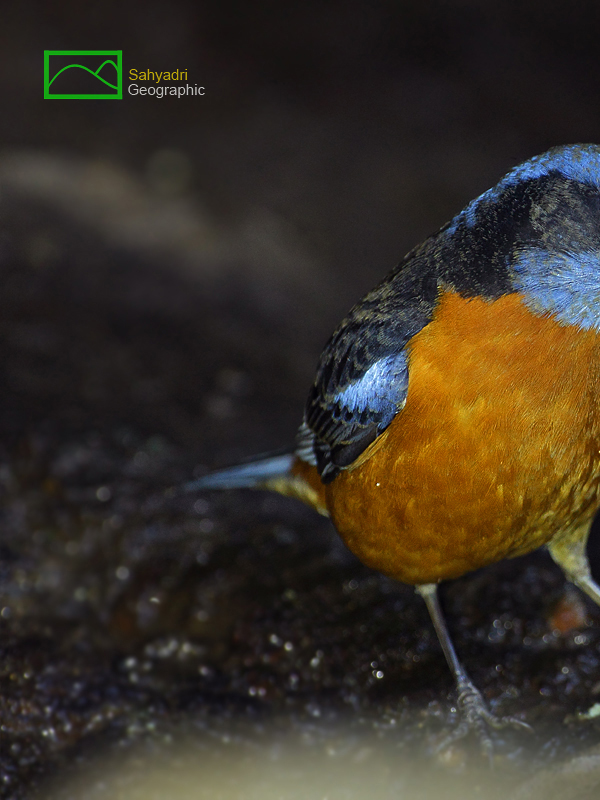 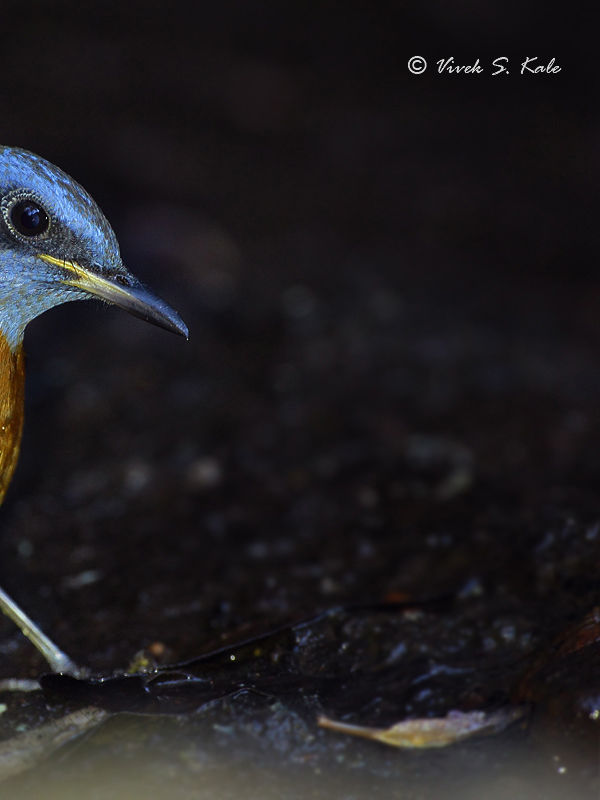
|
| |
| 8. Blue capped rock thrush male, western ghats, Maharashtra, India
|
| |
|
|
The primaries are black, all except the first two edged with blue. The secondaries are black, all except the innermost with a broad white band on the base of the outer webs . This white patch on the wing that is visible during flight. The tail is blackish edged narrowly with blue .Iris is dark brown. The gape is yellow and In the non-breeding season the base o£ the lower mandible is also yellowish .
|
|
The primaries are black, all except the first two edged with blue. The secondaries are black, all except the innermost with a broad white band on the base of the outer webs . This white patch on the wing that is visible during flight. The tail is blackish edged narrowly with blue .Iris is dark brown. The gape is yellow and In the non-breeding season the base o£ the lower mandible is also yellowish.
|
|
|
| |
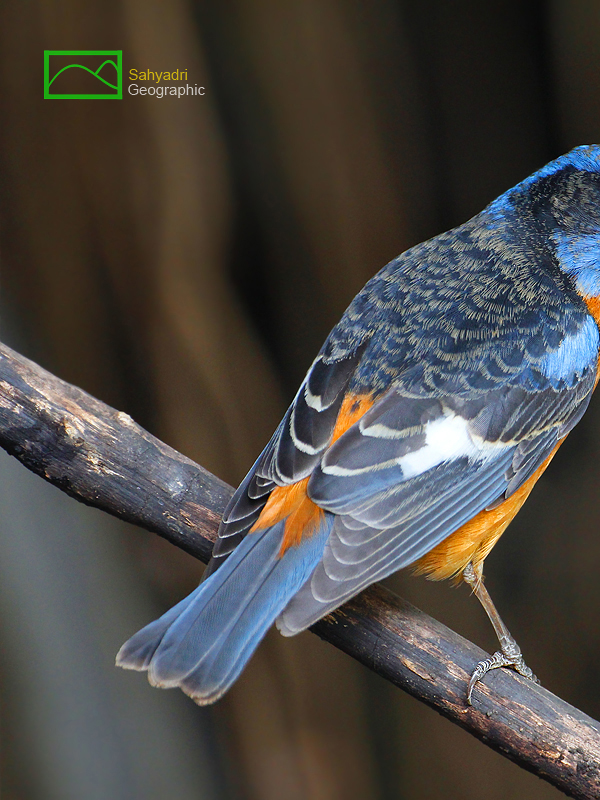 
|
| |
| 9. Blue capped rock thrush male, western ghats, Maharashtra, India
|
| |
|
|
| |
 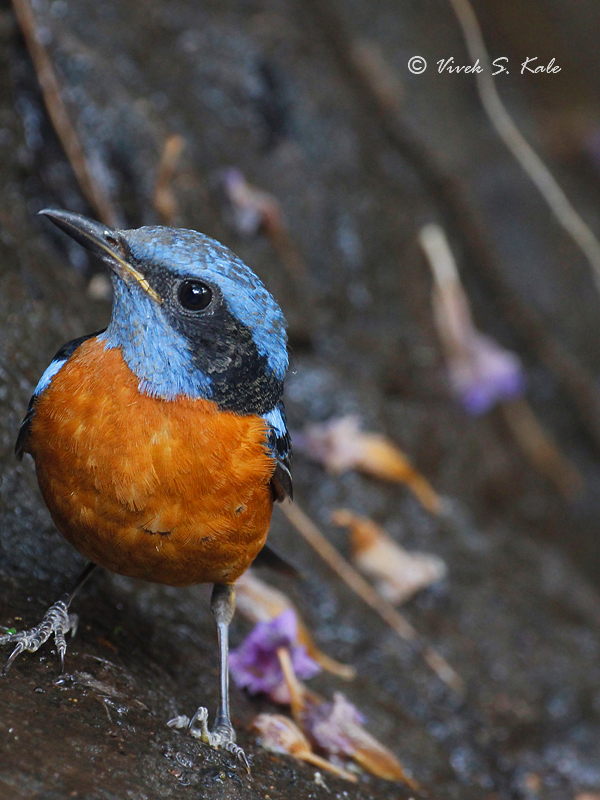
|
| |
| 10. Blue capped rock thrush male, western ghats, Maharashtra, India
|
| |
|
|
| |
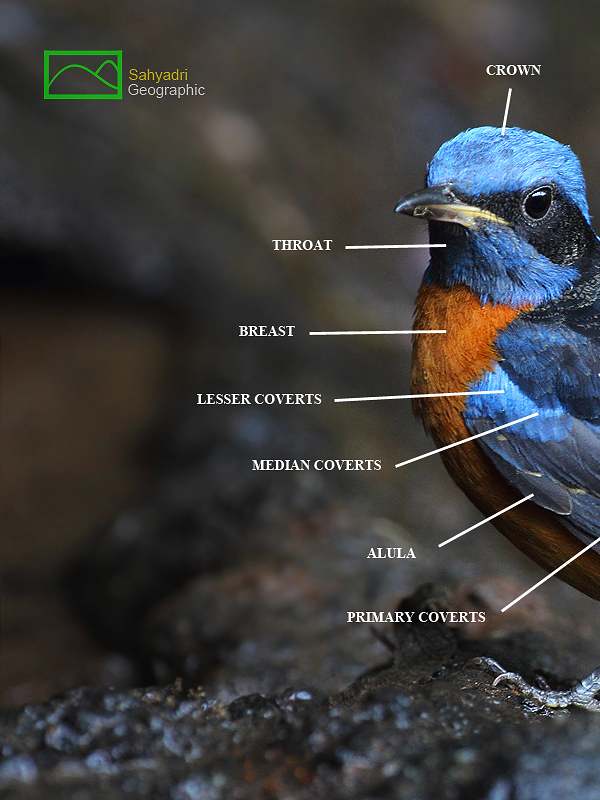 
|
| |
| 11. Blue capped rock thrush male, western ghats, Maharashtra, India
|
| |
|
|
मादी पक्षी रंगाने ओलिव्ह करडा असतो. तीच्या पोटावर गडद तपकिरी करड़्या खुणा असतात. तीच्या पाठीकडे व माथ्यावर गडद तपकिरी करड़्या खुणा असतात. अगदी लहान पिल्ले सुद्धा मादीसारखी दिसतात.
|
|
The female bird is olive brown. The female has olive brown upperparts which are barred with dark brown and whitish underparts which are scaledamd barred with brown.The female has buff baring on uppertail coverts
Juvenile birds resemble female. Male juvenile bird has white wing bars.
|
|
|
| |
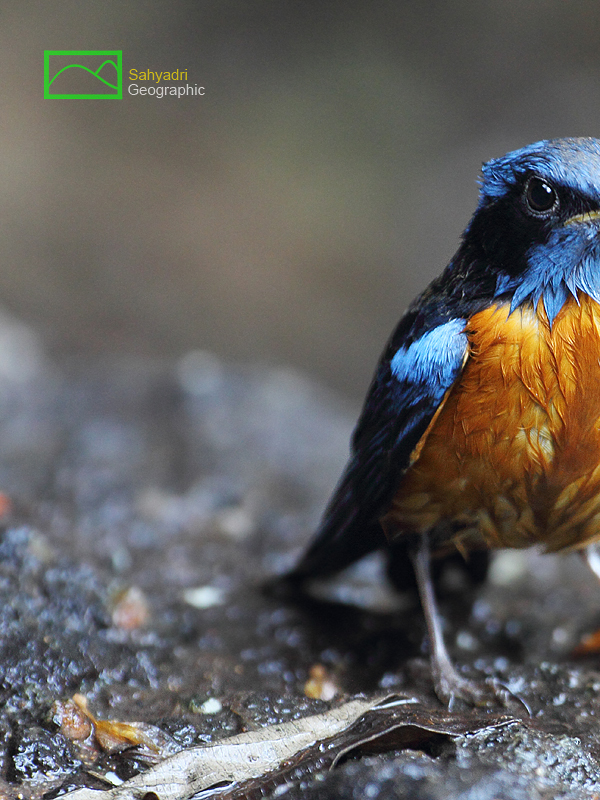 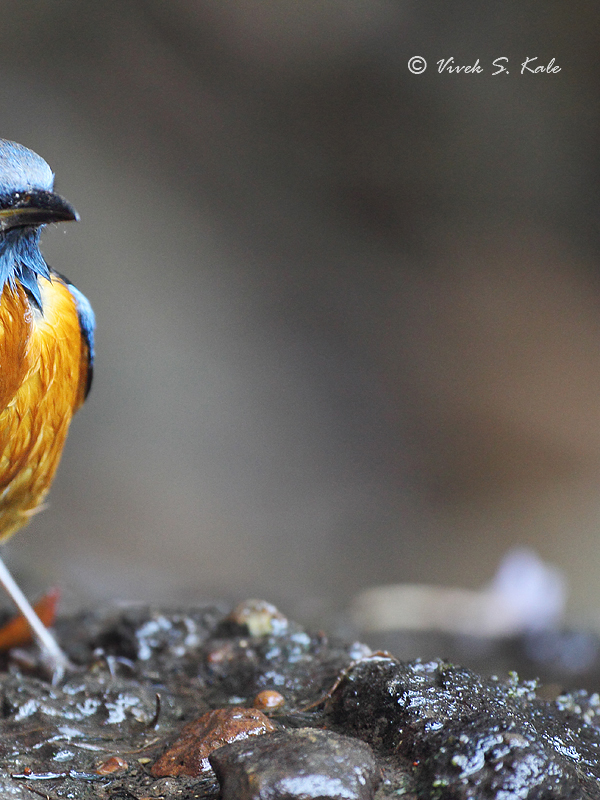
|
| |
| 12. Blue capped rock thrush male, western ghats, Maharashtra, India
|
| |
|
|
| |
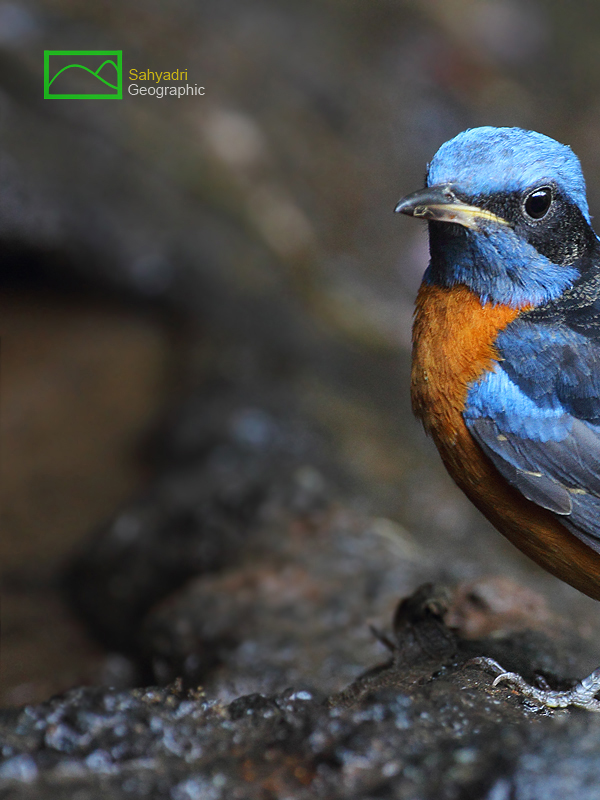 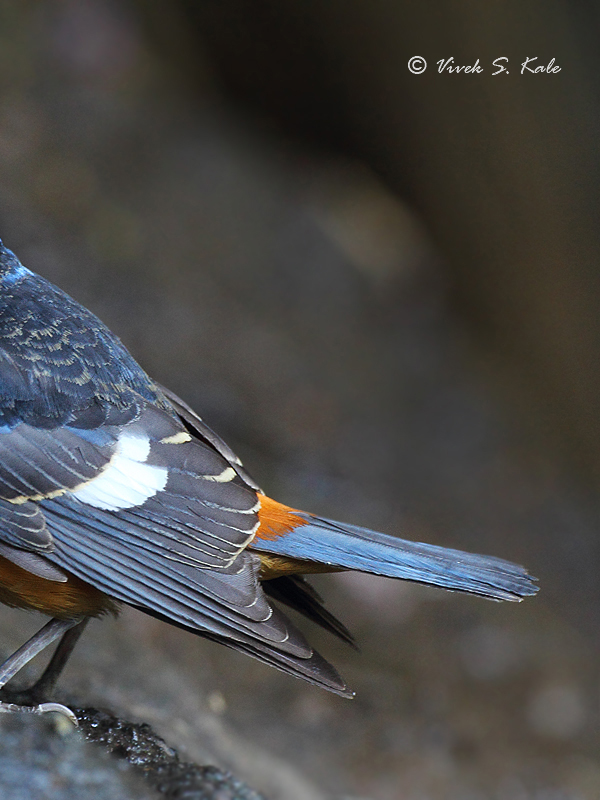
|
| |
| 13. Blue capped rock thrush male, western ghats, Maharashtra, India
|
| |
|
|
निळ्या टोपीचा कस्तुर हिवाळ्यात सह्याद्रीच्या जंगलात आढळतो. तसेच तो मध्य व पुर्व घाटातील जंगलात सुद्ध आढळतो.
|
|
There is are no further subspecies of blue capped rock thrush, Monticola cinclorhynchus.
This bird breeds in the foothills of the Himalayas (1000 meter to 3000 meter altitude). In winter it is found in Pakistan, some parts of Myanmar and India. In India the bird is seen in winter in western ghat, Asam hills and central east forests from October to April.
|
|
|
| |
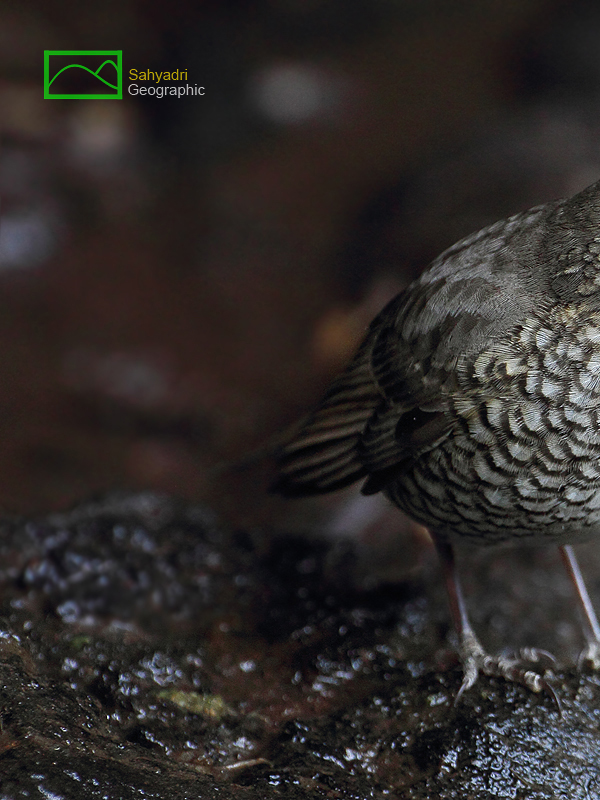 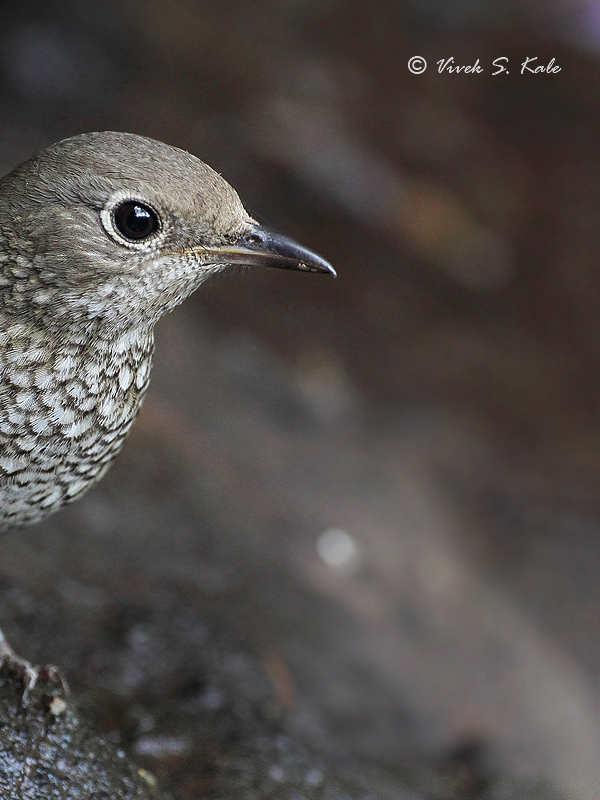
|
| |
| 14. Blue capped rock thrush female, western ghats, Maharashtra, India
|
| |
|
|
| |
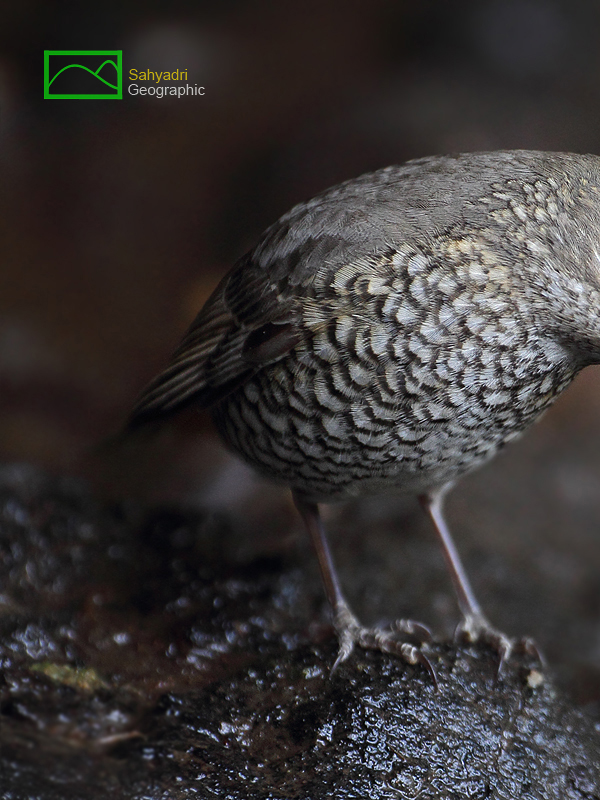 
|
| |
| 15. Blue capped rock thrush female, western ghats, Maharashtra, India
|
| |
|
|
| |
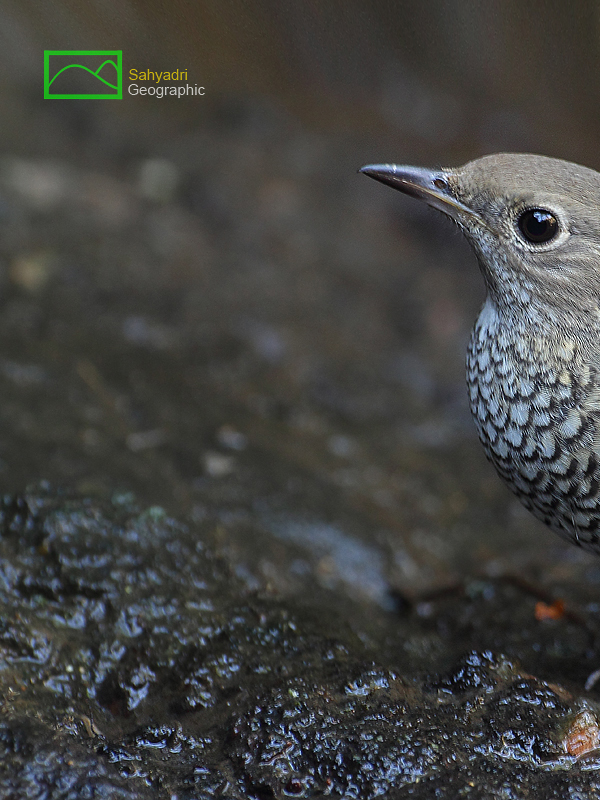 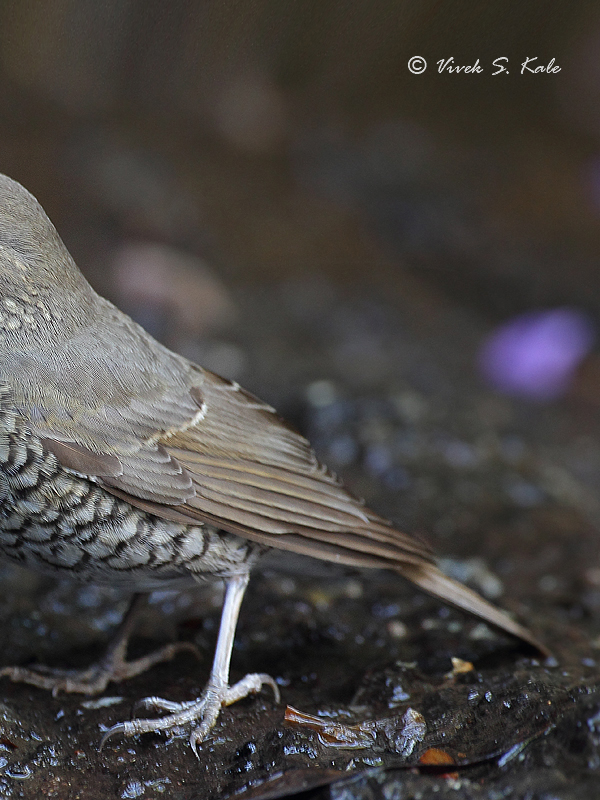
|
| |
| 16. Blue capped rock thrush female, western ghats, Maharashtra, India
|
| |
|
|
मे ते सप्टेंबर या उन्हाळयाच्या काळात तो हिमालयाच्या पायथ्याच्या डोंगराळ भागात (१ ते ३ हजार मीटर उंचीवर) विणीसाठी रहातो. त्यांचे घरटे जमिनीवर झाडांखाली, दगडांच्या खपचीत करतात. हिवाळ्यात हा पक्षी शांत असतो, तो फारसा आवाज करत नाही. विणी च्या हंगामात मात्र तो त्याची शीळ वाजवतो.
|
|
These birds nest on the ground in tree root crevice or in the rock crevice. These birds are mainly arboreal. They feed on insects in bark and on branches. They also sometimes forage among leaves in the forest floor.
|
|
|
| |
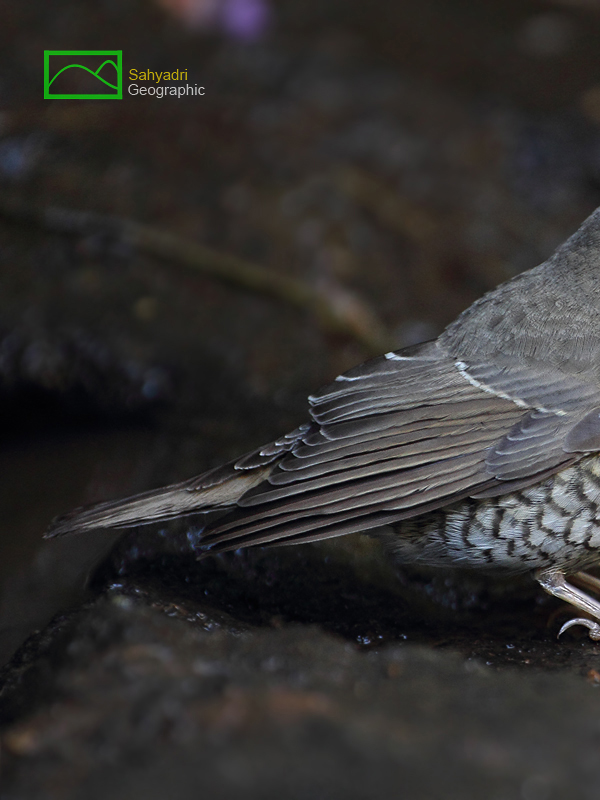 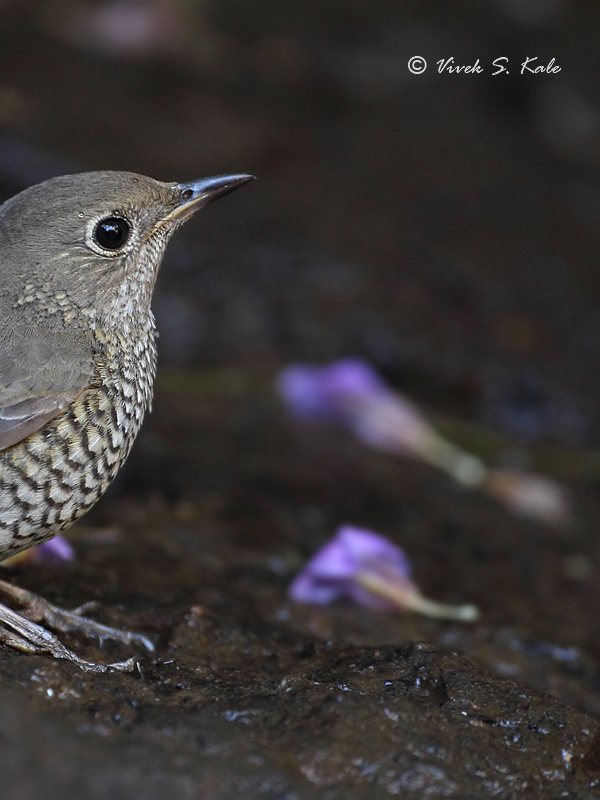
|
| |
| 17. Blue capped rock thrush male, western ghats, Maharashtra, India
|
| |
|
|
| |
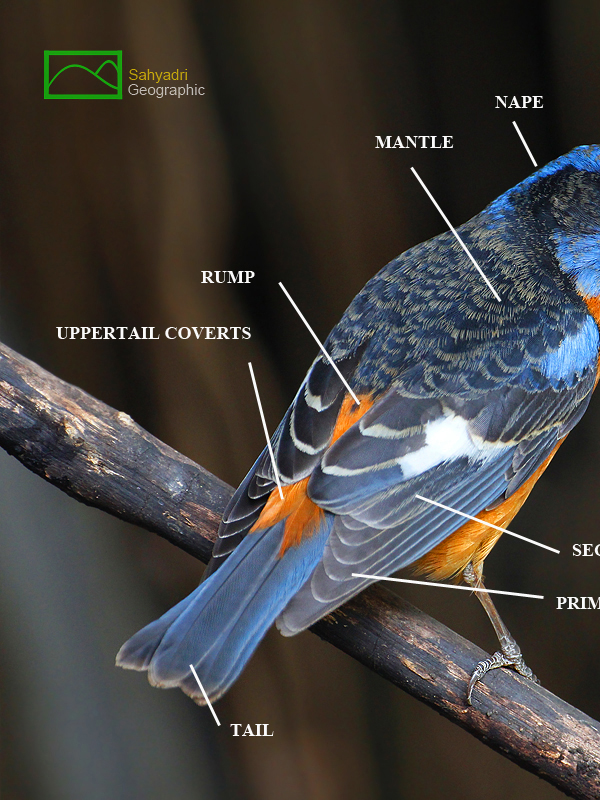 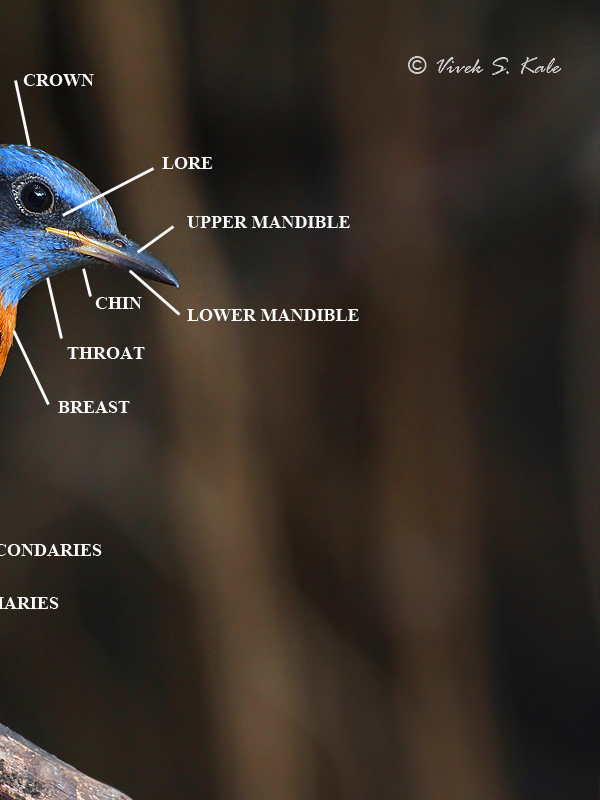
|
| |
| 18. Blue capped rock thrush male, western ghats, Maharashtra, India
|
| |
|
|
| |
 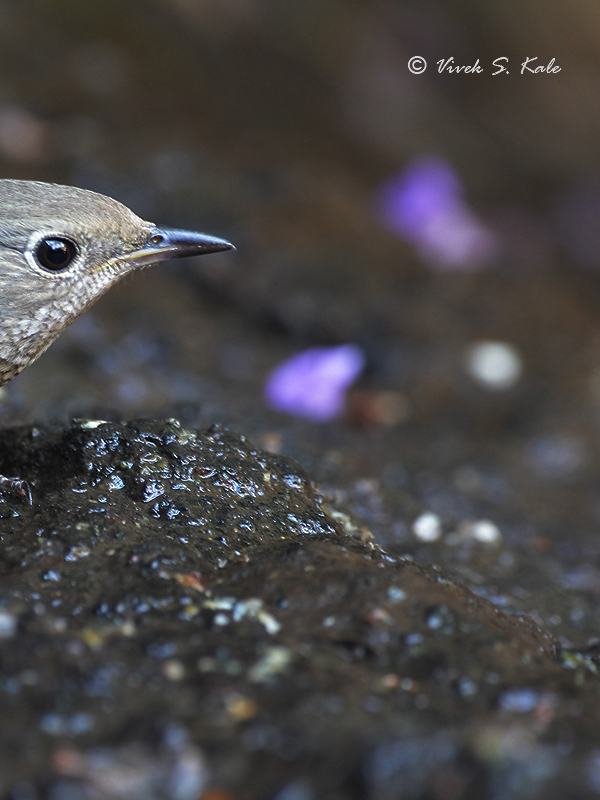
|
| |
| 19. Blue capped rock thrush female, western ghats, Maharashtra, India
|
| |
|
|
| |
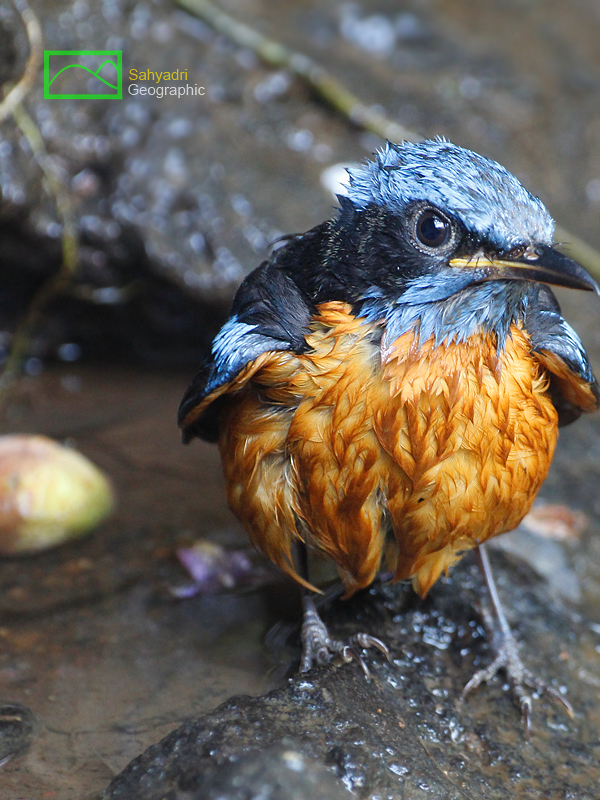 
|
| |
| 20. Blue capped rock thrush male, western ghats, Maharashtra, India
|
| |
|
|
| |

|
| |
| 21. Blue capped rock thrush migration (ebirds), western ghats, Maharashtra, India |
| |
|
|
| |
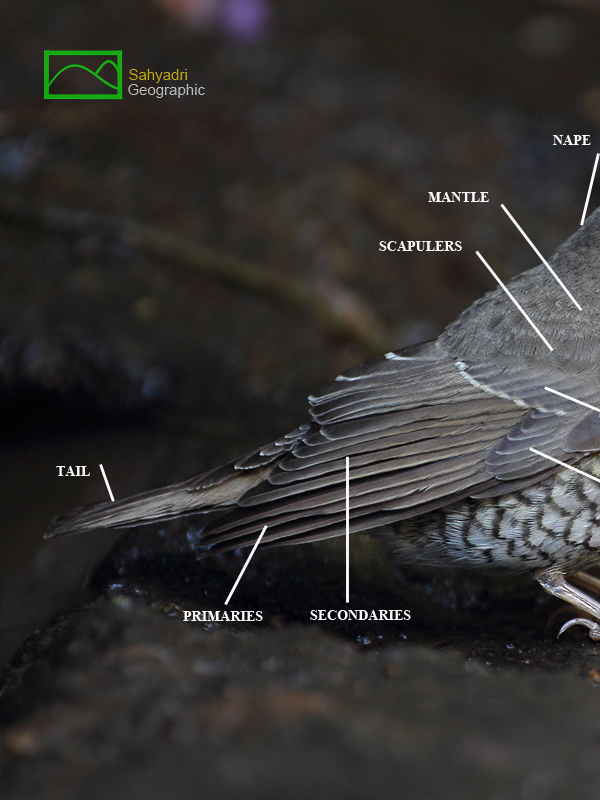 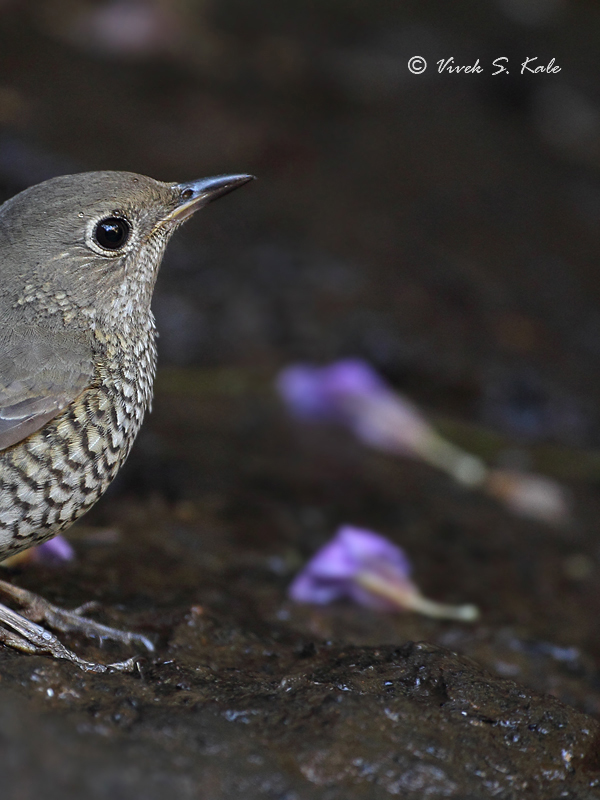
|
| |
| 22. Blue capped rock thrush female, western ghats, Maharashtra, India |
| |
|
|
| |
|
References :
1. Birds of the Indian subcontinent : Richard Grimmett, Carol Inskipp and Tim Inskipp
2. The book of Indian birds : Salim Ali
3. Fauna of British India Volume III : E.C. Stuart Baker
4. The nidification of birds of Indian empire :Volume II : E.C. Stuart Baker
Contact me at kale_v@rediffmail.com for any queries and suggestions.
|
|